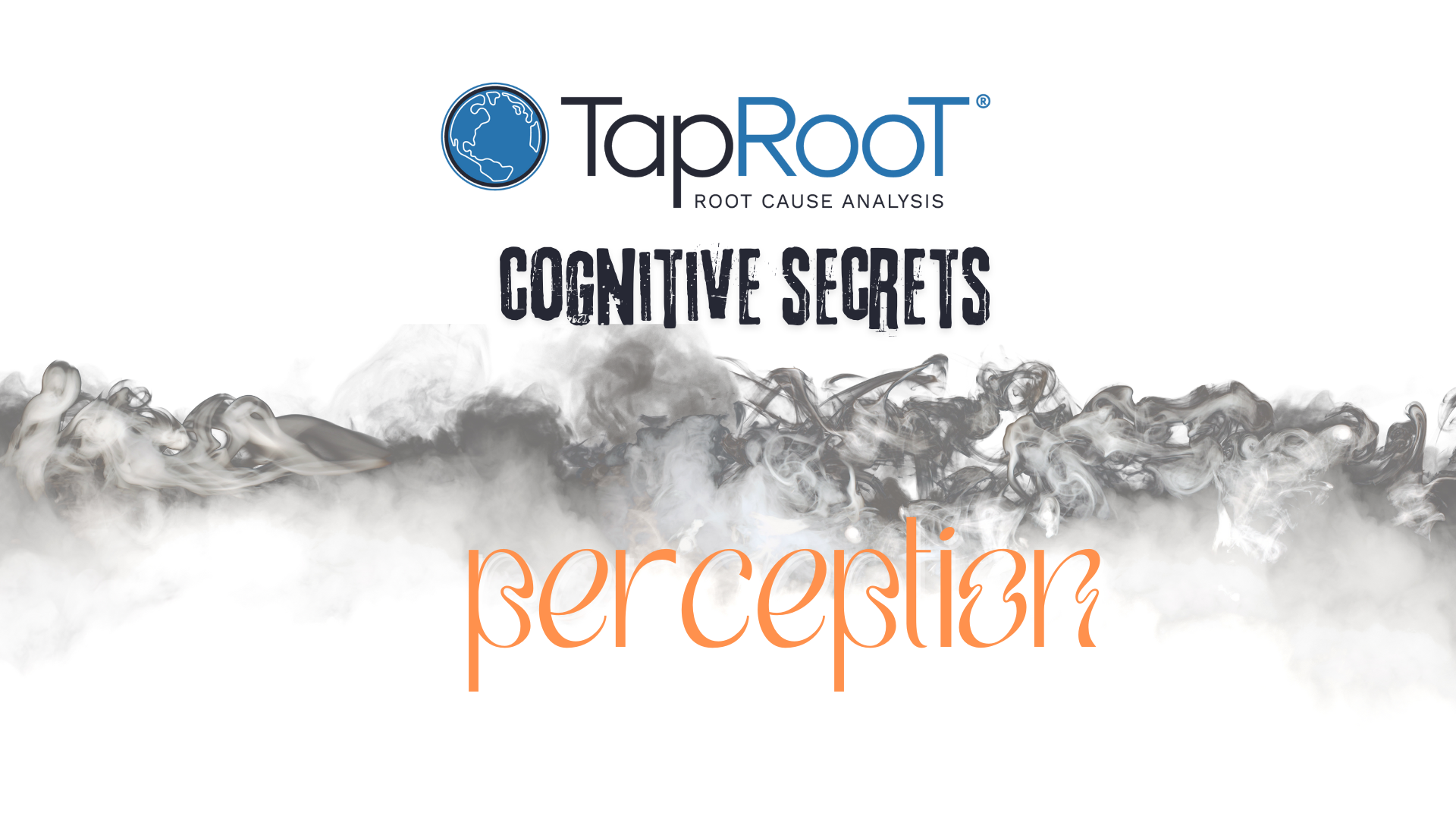Cognitive Secrets: The Science Behind Perception

Perception, the process by which we interpret and organize sensory information, is a cornerstone of human cognition. It plays a crucial role in our daily lives, influencing how we interact with the world and make decisions. Understanding the science behind perception is particularly important for global health and safety professionals. This article in the Cognitive Secrets series delves into the cognitive secrets of perception, shedding light on how these processes impact health and safety practices and outcomes, particularly in the context of incident investigations and safety programs.
The Basics of Perception
Perception involves several complex processes that transform sensory input into meaningful experiences. It is a dynamic interaction between sensory data and our cognitive frameworks, which include past experiences, expectations, and cultural context. This interplay helps us navigate and make sense of our environment effectively.
Sensory Input and Processing
Our sensory organs—eyes, ears, skin, nose, and tongue—collect environmental data. This sensory input is then transmitted to the brain, where it goes through a series of transformations. For example, visual information captured by the retina is processed in the occipital lobe, while auditory information is processed in the temporal lobes. The somatosensory cortex in the parietal lobe processes tactile information, which is critical for understanding and responding to physical contact.
Attention and Perception
Attention is a key factor in perception. It determines which sensory information receives focus and is processed further. Selective attention allows us to concentrate on important stimuli while ignoring irrelevant ones. This selective process is essential in high-stakes environments, such as healthcare and safety settings, where identifying critical information quickly can save lives.
Cognitive Biases and Perception
Our perceptions are not infallible; they are subject to biases and errors. Cognitive biases are systematic patterns of deviation from norm or rationality in judgment. These biases can significantly affect health and safety outcomes, particularly during incident investigations and the development of safety programs.
Confirmation Bias
Confirmation bias is the tendency to search for, interpret, and remember information that confirms our preexisting beliefs. In the context of health and safety, this bias can lead to misdiagnosis or overlooking critical safety signals. For instance, a healthcare provider might focus on symptoms that confirm a suspected diagnosis while ignoring evidence that points to a different condition. During incident investigations, confirmation bias can cause investigators to favor information that supports their initial hypothesis, potentially overlooking other crucial factors.
Anchoring Bias
Anchoring bias occurs when individuals rely too heavily on the first piece of information encountered (the “anchor”) when making decisions. This bias can be particularly dangerous in emergencies, where initial impressions can lead to incorrect assessments and actions. In safety programs, anchoring bias can result in underestimating or overestimating risks based on initial data points, affecting the effectiveness of safety measures.
Perceptual Processes in Incident Investigations

Accurate perception is crucial in incident investigations to determine the root causes of accidents and prevent future occurrences. Investigators must gather and interpret sensory information from the incident scene, witness testimonies, and physical evidence. Understanding the cognitive processes behind perception can enhance the accuracy and reliability of these investigations. (Image: An Illustration showing Descartes’s theory of vision, 1677).
Visual Perception and Scene Analysis
Visual perception plays a significant role in incident investigations. The primary visual cortex, located in the occipital lobe, processes raw visual data, while higher-order visual areas in the parietal and temporal lobes integrate this information to recognize objects and understand spatial relationships. Investigators use these perceptual processes to reconstruct the events leading up to an incident.
Auditory Perception and Witness Testimonies
Auditory perception, processed in the temporal lobes, is essential for analyzing sounds associated with an incident and evaluating witness testimonies. Effective listening and accurate interpretation of auditory information can help investigators understand the environmental conditions and human actions that contributed to the incident.
Multisensory Integration
The brain’s ability to integrate information from multiple sensory modalities is critical in incident investigations. The superior colliculus and the parietal lobe play key roles in multisensory integration, allowing investigators to combine visual, auditory, and tactile information to form a comprehensive understanding of the incident.
Enhancing Safety Programs Through Perceptual Training
Given perception’s impact on health and safety, perceptual training can enhance the ability to interpret sensory information accurately and mitigate cognitive biases in safety programs.
Simulation-Based Training
Simulation-based training provides a controlled environment where individuals can practice responding to various scenarios. This method helps improve perceptual skills by exposing trainees to a range of situations that they might encounter in real life. For example, flight simulators for pilots or virtual reality scenarios for medical professionals can enhance situational awareness and decision-making under pressure.
Mindfulness and Cognitive Flexibility
Mindfulness practices, which involve maintaining a moment-by-moment awareness of thoughts, feelings, and surroundings, can improve cognitive flexibility and reduce the impact of biases on perception. By training individuals to become more aware of their cognitive processes, mindfulness can enhance the ability to notice and correct perceptual errors. Implementing mindfulness in safety programs can lead to better risk assessment and more effective hazard mitigation.
TapRooT® Root Cause Analysis
TapRooT® Root Cause Analysis is a systematic approach to investigating and analyzing incidents to identify their root causes. To enhance your organization’s incident investigation capabilities and ensure robust safety programs, consider enrolling in TapRooT® training. This comprehensive training program equips health and safety professionals with the skills and tools necessary to conduct thorough root cause analyses. By learning to identify and mitigate cognitive biases, participants can improve their ability to perceive and analyze incidents accurately, leading to more effective prevention strategies.
TapRooT® training covers:
- Techniques for gathering and interpreting evidence.
- Methods for visualizing incident sequences using SnapCharT® diagrams.
- Strategies for recognizing and addressing cognitive biases.
- Best practices for implementing corrective actions to prevent future incidents.
Invest in TapRooT® training to empower your team with the knowledge and skills to enhance safety and prevent incidents. For more information and to register for an upcoming training session, visit TapRooT® Training.
The Future of Perception Research in Global Health and Safety
Advances in neuroscience and cognitive psychology continue to deepen our understanding of perception. Emerging technologies, such as brain imaging and machine learning, hold promise for developing new strategies to enhance perceptual accuracy and mitigate biases.
Brain-Computer Interfaces
Brain-computer interfaces (BCIs) are an exciting frontier in perception research. BCIs can augment human perception by communicating directly between the brain and external devices. This technology could enhance sensory processing in real time, offering significant benefits for health and safety applications. For example, BCIs could help first responders and safety personnel process information more efficiently during emergencies.
Machine Learning and Predictive Models
Machine learning algorithms can analyze vast amounts of data to identify patterns and predict outcomes. In health and safety contexts, these predictive models can help anticipate and prevent accidents by identifying risk factors that might not be immediately obvious to human observers. Integrating machine learning with perceptual training can lead to more robust safety programs and better incident prevention strategies.
Techniques to Improve Perceptual Accuracy
- Visual Search Strategies: Teaching individuals to scan their visual field systematically can enhance their ability to detect relevant information quickly.
- Cognitive Priming: Mental exercises that prepare the brain to recognize specific patterns or cues can speed up decision-making processes.
- Multisensory Integration: Incorporating multiple senses—such as combining visual and auditory cues—can improve overall perceptual accuracy and response times.
- Mindfulness and Focus: Practices that improve attentional control, like mindfulness meditation, can sharpen perceptual awareness and reduce distractions.
Conclusion
Understanding the science behind perception is crucial for enhancing health and safety practices worldwide. We can improve decision-making processes and outcomes by recognizing the impact of cognitive biases and leveraging perceptual training and emerging technologies. As research in this field continues to evolve, the potential to significantly advance global health and safety through better understanding and management of perception grows ever more promising.
Feel free to contact me or follow me on LinkedIn for more TapRooT® RCA content.

Sources
Lebedev, M. A., & Nicolelis, M. A. L. (2006). Brain–machine interfaces: Past, present and future. Trends in Neurosciences, 29(9), 536-546. 10.1016/j.tins.2006.07.004
McGaghie, W. C., Issenberg, S. B., Petrusa, E. R., & Scalese, R. J. (2010). A critical review of simulation-based medical education research: 2003–2009. Medical Education, 44(1), 50-63. https://doi.org/10.1111/j.1365-2923.2009.03547.x
Nickerson, R. S. (1998). Confirmation bias: A ubiquitous phenomenon in many guises. Review of General Psychology, 2(2), 175-220. https://doi.org/10.1037/1089-2680.2.2.175



